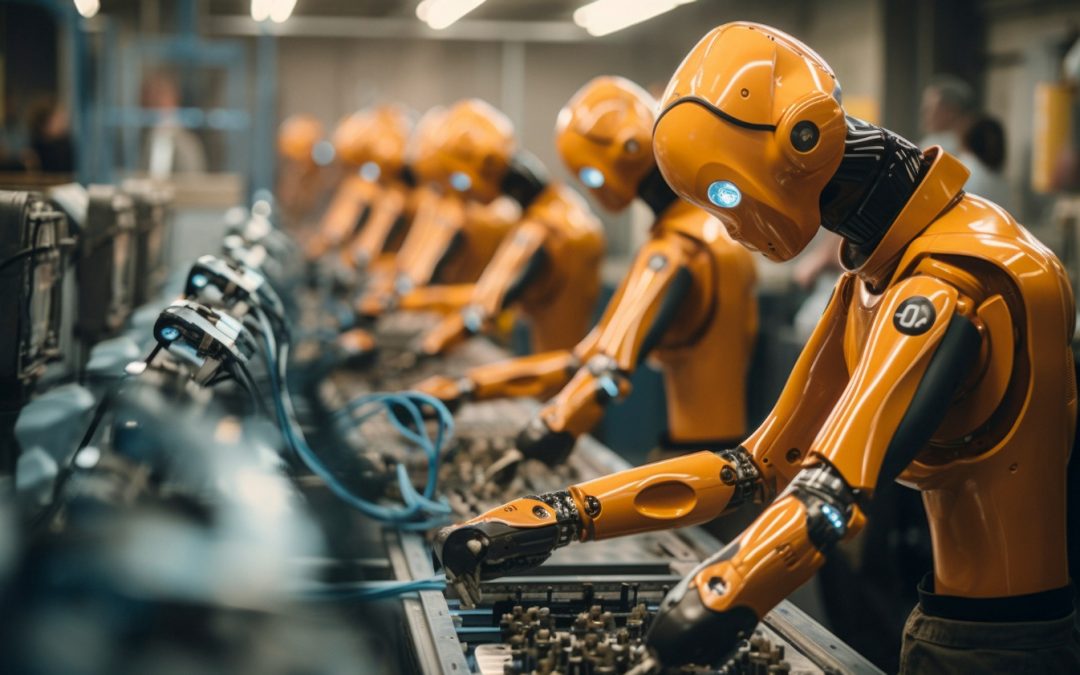A continually changing market is one driven by technology, continuous improvement, and new needs, such as in the case of the specified UK market for factory automation and industrial control systems.
In 2023, the UK Factory Automation and Industrial Control Systems Market Size was valued at USD 16 billion, considering its historical growth rate and statistical predictions, it is believed that Industrial automation market is expected to reach USD 38.35 billion by the year 2032 with an average growth rate of 10. 2%.
What is Factory Automation and Industrial Control Systems?
Factory automation and industrial control systems are sales of applying technology in simplifying manufacturing procedures and exercising control in industrial facilities. These industrial automation systems market in UK include various tools and solutions such as:
Programmable Logic Controllers (PLCs)
Human-Machine Interfaces (HMIs)
Distributed Control Systems (DCS)
Supervisory control & data acquisition system (SCADA for short)
Industrial Robots
Motion Control Systems
Manufacturing Execution Systems (MES)
These systems help the manufacturers to increase productivity and quality of their products, decrease the amount of working time lost to repairs and other hindrances and remain relevant in the ever-evolving market environment.

Market force that drive market growth
Several factors are fueling the growth of factory automation and industrial control systems in the UK:
Industry 4. 0 and Digital Transformation: The changes in demand, increased consumer expectations, advances in production technologies, and sustained pressure on margins all point towards the successful implementation of Industry 4.0.
Use of technologies like IoT, big data analytics or AI is giving shape to smart factories. Such technologies provide real-time tracking and analysis and automated operations and maintenance, thus enhancing production capabilities and effectiveness.
Demand for Operational Efficiency: In today’s global environment most of the businesses are strategic manufacturing when competing globally the aim is to reduce production cost and increase efficiency.
Automation and control systems enable efficient strategies for the organization depending on its purpose sustainability continuous improvement and reduced costs.
Focus on Quality and Compliance: Sectors such as pharmaceuticals, the food and beverages sector, and the automotive industry require a certain level of compliance with the laid down regulatory and industry standards concerning the quality and safety of their products.
This leads to the need for accurate control and monitoring of the process, which has been enhanced by automation to support these industries’ compliance with regulation.
Market trends so far as new companies are concerned
Collaborative Robots (Cobots): Cobots are programmed to enhance productivity and to interact directly with human operators without causing any form of harm.
Manufacturing industries have already incorporated robotics into their production lines because they are versatile and accurate when it comes to activities like assembly, packaging and quality control.
Edge Computing and Edge Analytics: Today we are witnessing the emergence of numerous IoT devices and sensors and this requires increasing amounts of data analysis at the edge of the network.
It is a form of distributed computing that involves analysis of data closer to the point of transaction in order to make quicker decisions.
Digital Twins: Digital twin technology involves the development of an exact digital model of an existing physical entity or process. This also enables manufacturers to model and adjust as the real systems without making reference adjustments with possible hitches being detected earlier.
Cybersecurity and Risk Management: When it comes to the workplace, and more particularly, factories, embracing connectivity and data means embracing risk.
Current trends have seen manufacturers put a lot of effort and money into the protection of their systems and data against cyber threats, measures such as Firewall and encryption.

Checkout: Different Types of Tools Used in Industrial Automation
Conclusion
There is a lot of potential for growth in the UK market for factory automation and industrial control systems market size in the coming year.
It is possible to learn about manufacturers’ approaches to the best implementation of modern technology and overcoming the critical issues affecting the factory automation market in order to operate effectively at present.
It will be important for firms providing products and services in these markets to continue to learn more about these trends and developments as the market evolves.
